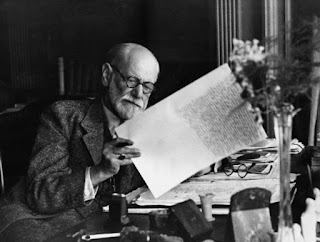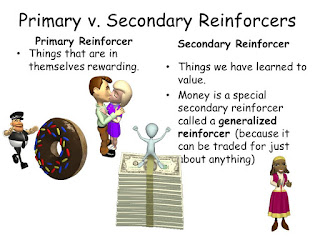The moment we listen the word “learning”,
many of us start thinking of studying and school. But the reality is that learning
is not limited to school. We learn everyday of our lives. Babies learn to kick
their legs, teenagers learn cycling or lyrics of their favorite song,
middle-aged people learn to change their diet patters.
In the light of all these examples, it
can be inferred that learning occurs when experience causes a relatively
permanent change in an individual’s knowledge and behavior. Learning is a
change that takes place through practice or experience, changes due to growth
or maturation.
It is worth mentioning here that the
change might be deliberate or unintentional; but the change must be relatively
permanent; it must be for a long time.
In other words, learning is the
acquisition of habits, knowledge and attitudes. It involves new ways of doing
things. When learning occurs, a more or less permanent change is experienced in
the learner’s behavior.
Learning is an active process that needs
to be stimulated and guided towards desirable outcomes. External stimuli that
induce learning include, particularly the influence of the teacher through the
assignments he/she makes, the questions he/she asks, the visual aids and other
procedures that he/she utilizes to arouse learning interest and activity.
Definitions of Learning:
The following definitions have been
given from different perspectives. These are:
1. Learning
is a Change in Behavior:
According to J.P. Guilford, “Learning
is any change in behavior, resulting from behavior”. In this definition, a
distinction between change in behavior due to maturity and change in behavior
due to learning is not clear; though both these activities take place
simultaneously.
2. Learning
is an Organization of Behavior:
According to Garrett, “Learning is that
activity by virtue of which we organize our response with new habits.” In the
light of this definition, it is evident that the element of organization in
learning is very much important. For example, in learning to ride a cycle, we
have to organize the activities of turning the pedal, balancing the handle,
etc. in order to be reasonably safe with the vehicle. Learning of the activity
of cycling will be complete, only when he/she accomplishes this organization.
3. Learning
is the Reinforcement of the New Activity:
Learning of a new activity is an
addition to the person’s store of experience. Reinforcement too is an vital
element in the act of learning; it helps in forming only successful responses
and weeding out the unsuccessful one. According to R. S. Woodworth, “An
activity may be called learning in so far as it develops the individual in any
way, good or bad and makes his environment and experiences different from what
it would otherwise have been.”
Characteristics
of Learning:
- Learning is growth
- Learning is purposeful
- Learning is intelligent
- Learning is both individual and social
- Learning affects the conduct of the learner
- Learning is adjustment
- Learning is experience
- Learning is active
Methods of Learning:
The principal forms or methods of
learning are learning through imitation, learning through conditioned response,
learning through trial and error, and learning through insight.
Learning through Imitation:
Learning through imitation is one of the
most important forms of learning. It is generally observed that children
imitate the behavior, habits, manners and ways of adults. In imitation, the
learning exactly copies the behavior of anther person without understanding or
thinking.
The main characteristics of learning
through imitation are the following:
· The
imitator never does it before imitation, but performs the activity only after
seeing it
· In
imitation, learner exactly copies the activity performed before him/her
(learner)
Learning through Conditioned Response:
It is one of the most important methods
of learning, especially for children. In childhood, many of the responses of
the child are conditioned to particular objects and even when the individual
becomes an adult, his conditioned response continues.
Learning through Trial and Error:
The method of trial and error is used
in the following circumstances:
- This method is used when the learner is completely
motivated and can see the goal clearly. Motivation as well as the presence
of the goal is necessary for awakening the response in learning through
trial and error.
- The method of trial and error is used when the learner
fails to find the solution of the problem. It is only when he/she fails to
find out the solution of the problem that he/she proceeds blindly, tries
in various directions, commits errors, eliminates them, and finally
arrives at a successful response
- The method of trial and error is used when perception
alone or learned activities are not sufficient.
Learning through Insight:
The insight method of learning is
superior to the methods of imitation and conditioned response, because both the
latter methods (imitation and conditioned response) take more time.
Students will be permanently helped by
the use of insight method of learning in place of trial and error methods in
their studies and other activities.
There are many characteristics of
learning through insight. These are as follows:
Insight is sudden
- Insight alters perception
- Old objects appear in new patterns and organization by
virtue of insight
- Insight is relative to the intellectual level
- Previous experiences and maturity also effects insight
Maturation and Learning:
The learner’s stage of maturity is
important in the learning process. Until and unless, there is sufficient
physiological maturity, there will be little learning.
For example, the
child learns to walk only after he has reached a particular stage. He learns to
read more easily only after he has reached his individual state of readiness
for reading.
Rate of maturation varies from
individual to individual. Automatic activity, random acts, reflexes and
instincts and sudden expressions of emotions can be accepted as unlearned
actions and the result of maturation.
Factors
of Learning:
There are various factors that assist
the process of learning among human beings. These factors can be divided into
the following categories:
Psychological Factors:
These are the most important factors in
the process of learning. It includes the following factors:
- Generalization: When an individual goes through many
similar and comparable experiences, he/she discerns the common element
among them. On this basis, he/she formulates a general rule that has
considerable influence on his/her future conduct.
- Facilitation: It is an important factor in learning
because it is human tendency to learn activities that are simple and
interesting.
- Differentiation: An individual distinguishes between
dissimilar objects or compares them in such a manner to bring dissimilarity.
- Inhibition: It is an obstructive psychological element
or factor in learning. In this, some psychological elements provide
obstruction in the learning process.
- Integration: It helps to improve one’s insight into the
subjects already learnt.
Physiological Factors:
Learning is more a psycho-physiological
process than a purely psychological one. Following are the important
physiological factors in learning:
· Fatigue: In
a state of fatigue, the individual’s capacity to learn is considerably reduced
and all that is learnt is also easily forgotten.
· Drugs and
intoxicants: These are the obstacles in the process of learning.
· Diseases: Disease,
whether it is physical or mental, obstructs learning as it reduces the capacity
to grasp and learn.
· Excited Physical
Condition: An excited bodily state, arising out of emotion cause
difficulty in learning.
· Difference in Age and
Maturity: Before any particular activity can be acquired, it is
necessary to attain a particular level of maturity that can only come at a
particular age level.
Physical Factors:
The physical factors have also some
importance in the learning process. For example, high and low temperature,
noise, and amount of humidity, all these conditions influence the process of
learning.
Social Factors:
Man is a social animal and all his
activities are influenced by the social conditions, for example, imitation,
suggestion, sympathy, praise, competition, and cooperation. All these factors
influence the learning process.










